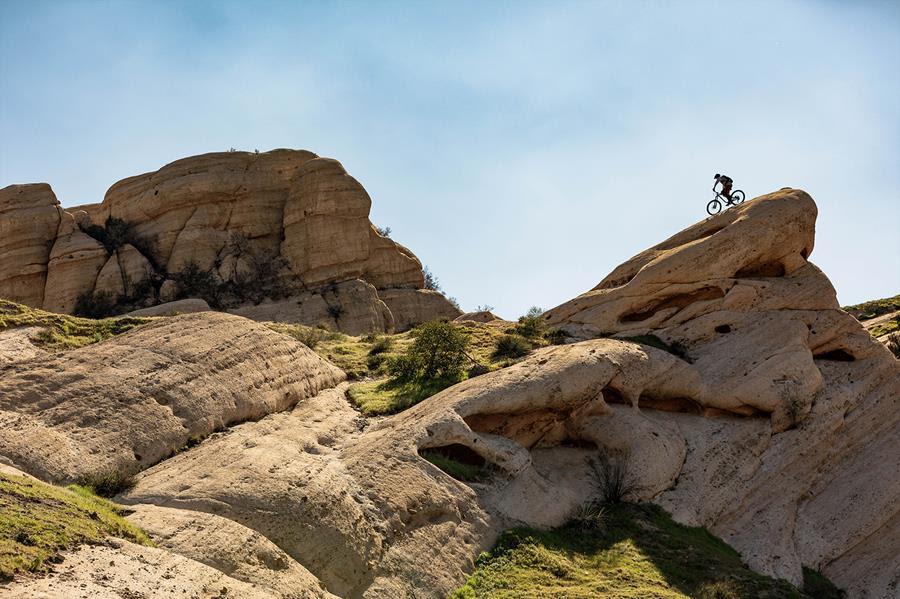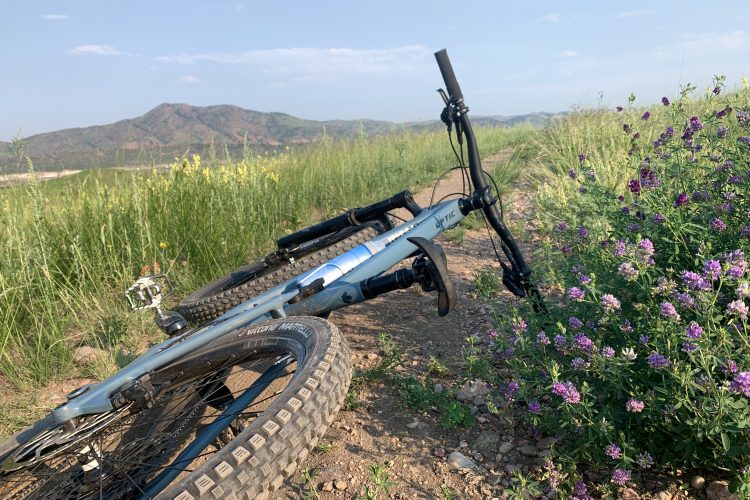Editor’s Note: “Over a Beer” is a regular column written by Greg Heil. While Greg is the Editor in Chief for Singletracks.com, any opinions expressed in this column are his alone and do not necessarily represent the opinions of Singletracks.com.
When someone asks you how you spend your free time or what you’re most passionate about, if you’re reading this website chances are high that “mountain biking” will be your answer. If you meet someone who doesn’t know what mountain biking entails, how do you describe it to them? How do you succinctly define our sport?
[see_also id=’229206′]
Defining “Mountain Biking”
Wikipedia says that “mountain biking” is “the sport of riding bicycles off-road, often over rough terrain, using specially designed mountain bikes. Mountain bikes share similarities with other bikes but incorporate features designed to enhance durability and performance in rough terrain.”
This definition poses some serious problems.
1. Wikipedia says that mountain biking is riding off-road using a mountain bike. This is a circular definition at its worst.
2. The writer then tries to clarify sentence one by attempting to define what a “mountain bike” is in sentence two. But again, they fail horribly. What features are incorporated? Enhanced compared to what? What qualifies as “rough terrain”? What about a gravel bike or a cyclocross bike, which both provide “features designed to enhance durability and performance in rough terrain,” particularly compared to a road bike?
3. What if you’re riding a mountain bike on a 4×4 road with massive boulders, drops, and steep fall-line descents that is unrideable on a road bike by mere mortals? You’re still technically riding on-road, it’s just a very rough road.
4. Based on this definition, the roughness of the terrain and durability of the bikes are the key defining features. What about wispy-light XC bikes on terrain that’s not particularly rough?
A Better Definition
Instead of taking Wikipedia’s word for it, I’m putting forward my own definition of mountain biking:
“Mountain biking is the act of riding a bicycle under 100% human power or the pull of gravity on terrain that is impassable by low clearance, two-wheel drive vehicles.”
This definition accomplishes a few key things:
1. “Mountain biking” is not defined by the machine. Mountain biking is an activity, a physical motion that you engage in. I argue that any bicycle can be used for mountain biking, if only the rider possesses sufficient skills to successfully pilot their machine. While one could argue that using the word “bicycle” in my definition poses a problem, the definition of “bicycle” is much clearer than that of “mountain bike.” I also attempt to clear up any confusion about the term “bicycle” later on.
[see_also id=’54105′]
2. Despite not being defined by the machine, mountain biking is inextricably defined by what came before: namely, road biking. Instead of crafting mountain biking’s definition in opposition to road bikes, however, I choose to define it in opposition to passenger vehicles, of which “two-wheel drive” (2wd) and “low clearance” have commonly-agreed upon definitions.

2a. This means if you’re riding a bicycle on a gnarly 4×4 road with boulder fields, ledge drops, scree-filled descents, or even just water bars and creek crossings that prevent a 2wd passenger vehicle from navigating the terrain, you’re mountain biking.
2b. This definition, in opposition to 2wd passenger vehicles, isn’t based upon the roadway itself, but rather, the “terrain.” This means that even if you’re riding on a gated gravel railroad grade that is legally off limits to motor vehicles, but could be feasibly passable by such a vehicle, you’re not mountain biking. Conversely, if you’re riding down cement staircases in a South American city, even though said staircases consist of cement and paving, you’re still mountain biking. Finally, riding on a singletrack trail that is smooth as a baby’s bottom, but is so narrow (ex: twisting through tight trees and along steep hillsides) that there’s no way a car could pass through, you’re still mountain biking.

3. While mountain biking is defined by the terrain, aside from saying what this terrain is not, I don’t go into more detail. Why? This allows the definition to encompass everything that is currently mountain biking, and could qualify as mountain biking in the future: treeless deserts, deep forests, high alpine mountains, packed snow, rocks, roots, ladder bridges, jumps… use your imagination! Can a bicycle travel there but a 2wd passenger vehicle can’t? Ok, it’s mountain biking.

4. Now, for the elephant in the room. I clarified the definition of “bicycle” by saying, “under 100% human power or the pull of gravity.” This includes chairlift-assisted downhill. It includes pedaling up a mountainside. It does not include using a motor in any form, even if it is pedal-assist.
Based on my definition, if you rode an ebike to the top of the mountain, shut off the motor, and rode down with no pedal assist, you’d be mountain biking for half the time (you’d just be riding a really heavy, cumbersome mountain bike that doesn’t handle very well).
Some of you probably disagree with this clarifier. While perhaps I’ll dedicate a full article to defending this part of my definition in its entirety, I’ll say this for now. From its inception, the bicycle has been a human-powered vehicle. When a motor was added to the bicycle, it became a motorbike, and moved into a different class. Pedal-assist ebikes live in a bizarre in-between world, fitting neither category well (arguably the worst of both worlds). I won’t go so far as to say that if you happen to have a motor attached to your frame that you can’t ever go mountain biking on it. If you choose to ride such a Frankenstein-esque contraption, instead of saying that you are “mountain biking,” it would be much more accurate–and easier–to simply say you’re ebiking.
Problems
Undoubtedly, there are plenty of potential problems with this definition. It’s pretty easy to think of an exception, like riding a BMX bike in a halfpipe, that fits this definition but is generally not considered “mountain biking.” So what do you think? Is there a better way to define “mountain biking”?
Your Turn: I opened myself up. Flame on, but try to keep it civil.






















18 Comments
Jan 4, 2018
Jan 3, 2018
Jan 3, 2018
I usually just define it as riding a bike on dirt trails.
Jan 3, 2018
So is riding a jump park considered MTB? And how about a flow track? Now that I think about it, in my mind the one thing that separates MTB from just goofing around on my bike (such as at a jump park or skate park) is mileage. I don't consider a 300' long jump line to be MTB, but I would consider a 2 mile long flow track to be. Why? I have no idea. Maybe Strava has me brainwashed.
Jan 3, 2018
Jan 3, 2018
Jan 3, 2018
Are you aware you can edit Wikipedia articles? You should challenge their article with your own.
I think the biggest problem is that you insist on calling it "mountain biking". Maybe we should ditch the term altogether and find something more relevant.
I lived in the city for 10 years and this is where i rode exclusively. The many curbs and stairs around the city became my obstacles. I even urbanised my bike to better suit the city and to be honest i always felt silly calling myself a mountain biker. The name was just wrong. Maybe "urban biker"?
Jan 3, 2018
Yeah, but Wikipedia doesn't pay me to work on their articles :) Maybe if I have some "free time" I'll try to get it updated.
"I think the biggest problem is that you insist on calling it “mountain biking”. Maybe we should ditch the term altogether and find something more relevant."
Touche. I touched on this issue in this article: https://www.singletracks.com/blog/trail-advocacy/mountain-biking-has-an-identity-crisis-and-it-affects-us-all/
Jan 3, 2018
I've been thinking about Greg's definition for a while, trying to see if I can improve it, but I haven't come up with anything yet. The only part I might quibble with is the human powered bit, but from a historical perspective, that part is certainly accurate.
Jan 3, 2018
Jan 4, 2018
Jan 10, 2018
I agree with the other posters on riding stairs. I certainly rode many stairs on my bmx bike as a kid. I wouldn't consider this mountain biking. I'm speculating that Greg felt the need to include this because of the city riding competitions that often involve stairs, narrow sidewalks and human built ramps.
However we all call it, it is damn fun.
Cheers
Jan 4, 2018
Jan 4, 2018
Jan 4, 2018
Jan 3, 2018
I say - just enjoy the ride, where ever it is, and enjoy the beer after.
Jan 4, 2018
Jan 3, 2018